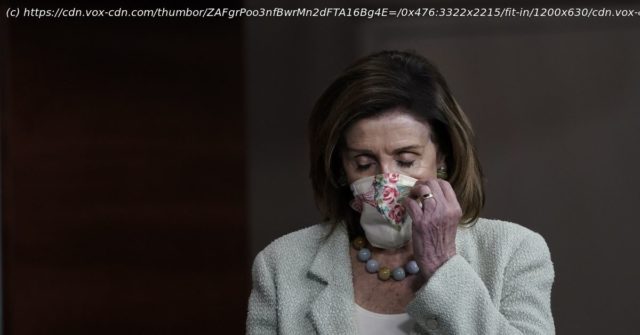If the rule House Democrats followed doesn’t allow enough spending, what use is their rule?
At the end of No Country For Old Men, hitman Anton Chigurh arrives to murder Carla Jean, the wife of his dead nemesis. He offers her one chance to live: He’ll flip a coin, and if she guesses right, he’ll spare her life.
“Call it,” he says.
She refuses.
“Call it,” he says again.
“The coin don’t have no say,” she replies. “It’s just you.”
Which brings me to the House Democrats.
The House Democrats’ $3 trillion HEROES Act has much of what the economy needs. A trillion dollars in aid to state and local governments. Another round of stimulus checks. An expanded SNAP benefit. An extension of expanded unemployment benefits through January 31. But conspicuously absent is the policy that would do the most to guarantee — or at least support — ongoing recovery: automatic stabilizers.
The idea is simple, and backed by an array of economists. We’re in a depression. The support people need should be tied to the economic conditions they face, not arbitrary expiration dates.
There are various proposals for how to do it. Rep. Don Beyer’s (D-VA) Worker Relief and Security Act is a good place to start. It groups states into tiers based on their unemployment rates, and ties both extensions and expansions of unemployment insurance to those tiers. The support doesn’t end until the economic emergency ends.
“Peter Drucker wrote years ago that the best leaders make the fewest decisions,” Beyer told me, referencing the famed business author. “Let’s make the decision now and let things play out.”
In the run-up to the HEROES Act, House Democrats seemed united around automatic stabilizers. The progressives supported them. But the moderates did, too.
“We’ve been pushing it,” says Rep. Derek Kilmer (D-WA), chair of the New Democrat Coalition, which is both the House Democrats’ largest internal caucus and the one that represents most of its moderates. “We’ve been arguing we should look past the upfront cost. These investments will be made eventually. Let’s get it right the first time, give people certainty, and avoid brinksmanship.”
Surveys showed the idea was popular. Polling by Data for Progress from May found that 73 percent of all voters — including 69 percent of Republicans — would support “a policy that would increase government spending on unemployment benefits whenever the average unemployment rate increases above 5 percent.”
So what happened?
At a May 14 press conference, House Speaker Nancy Pelosi laid it out. “I’m a big supporter of having stabilizers in the bill,” she said. She blamed their absence on the Congressional Budget Office (CBO), which estimates the costs of legislation, because under CBO’s rules, the likely cost of the stabilizers “counts in the bill today.”
What Pelosi is saying happened is this: House Democrats sent CBO a version of the bill that included automatic stabilizers. CBO estimated how high unemployment would be over the next few years to project how much the automatic stabilizers would cost. I’m told that, for the unemployment insurance, CBO’s estimate was in the $1-2 trillion range. When Pelosi saw the price tag, she decided the sticker shock could kill the bill. So she cut the stabilizers.
“If we put every good idea people wanted in the bill, it would be an $8 trillion bill,” a senior House Democratic staffer told me. Three trillion was simply the biggest bill Pelosi thought could pass. “It’s called political reality,” the staffer said, with some exasperation.
I’m not in a position to argue with Pelosi over how big of a bill House Democrats will or will not support.






